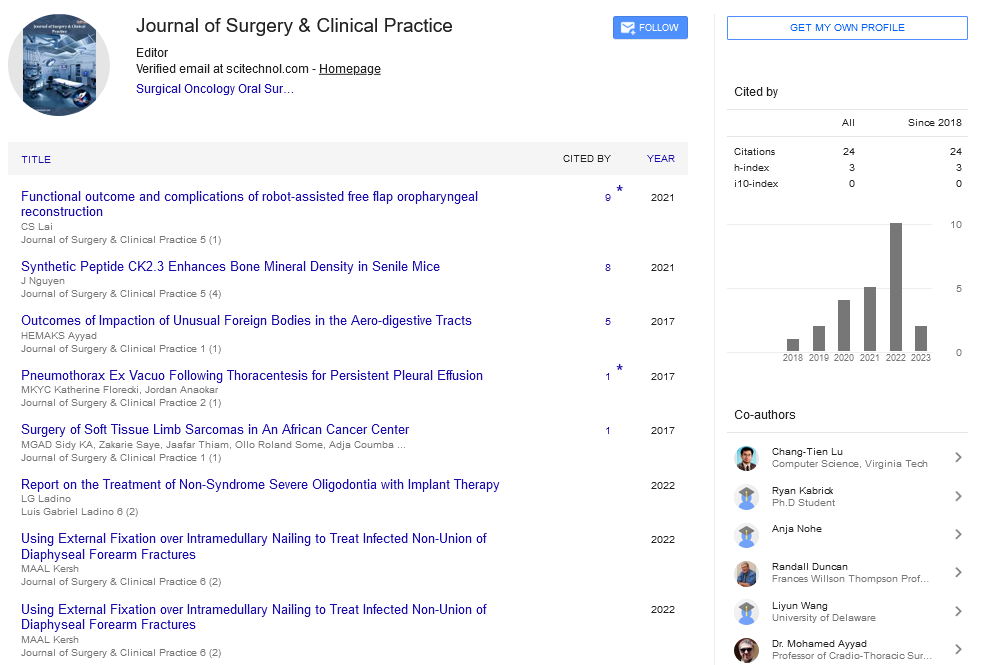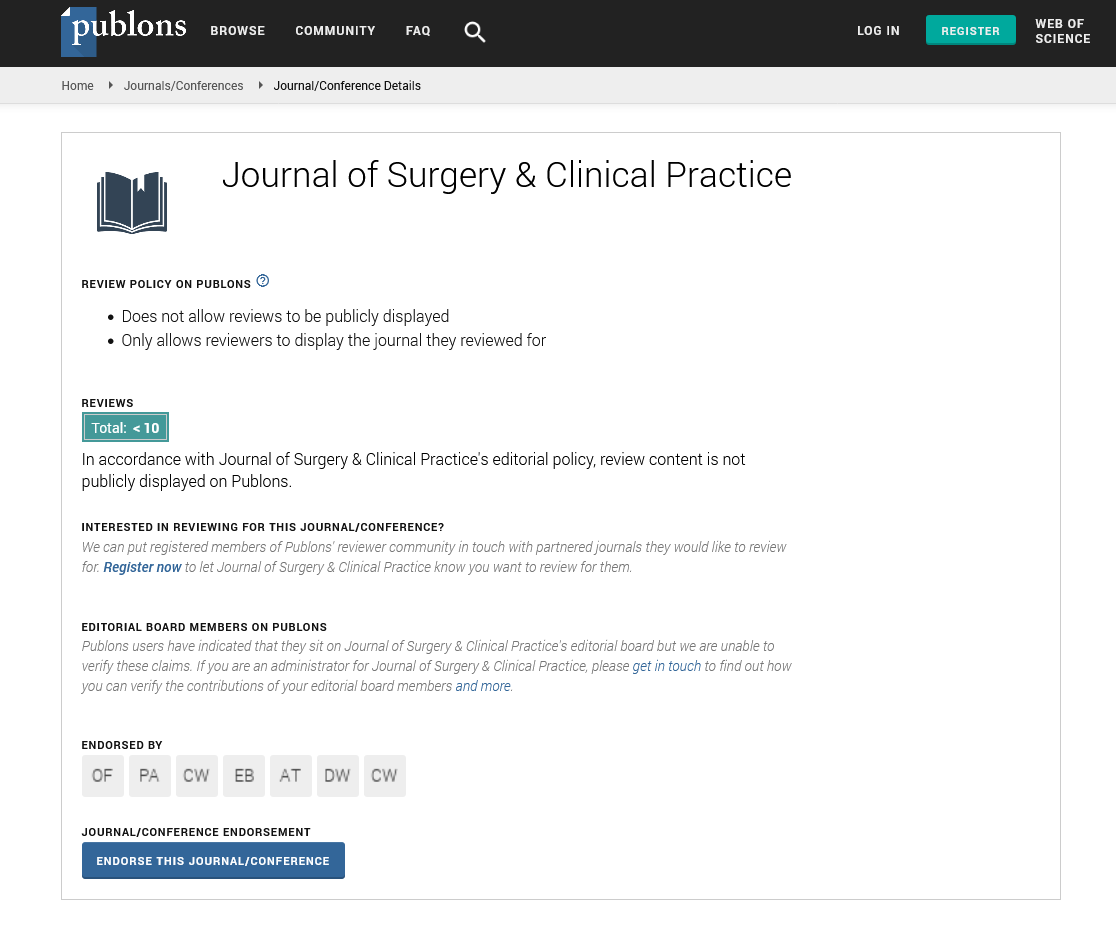Commentary, J Surg Clin Prac Vol: 7 Issue: 1
Advancements in Caesarian Section Wound Healing
Angela Fitch*
1Department of Medicine, Harvard Medical School, Massachusetts, United States of America
*Corresponding Author: Angela Fitch
Department of Medicine, Harvard Medical School, Massachusetts, United States of America
E-mail: angela@harvard.edu
Received date: 22 February, 2023, Manuscript No. JSCP-23-93032;
Editor assigned date: 27 February, 2023, Pre QC No. JSCP-23-93032(PQ);
Reviewed date: 15 March, 2023, QC No. JSCP-23-93032;
Revised date: 22 March, 2023, Manuscript No: JSCP-23-93032(R);
Published date: 29 March, 2023, DOI: 10.35248/JSCP.23.7.100368.
Citation: Fitch A (2023) Advancements in Caesarian Section Wound Healing. J Surg Clin Prac 7:1.
Description
Caesarean section, also known as C-section, is a surgical procedure that involves delivering a baby through incisions made in the mother's abdomen and uterus. Like any surgical procedure, a caesarean section requires careful wound management to ensure proper healing and prevent complications.
Proper wound management is crucial for the successful healing of a caesarean section incision. This involves pre-operative preparation, careful surgical technique, post-operative care, pain management, wound dressings, wound cleaning, suture removal, and monitoring for complications. Pre-operative preparation means before the surgery, the women should be informed about the procedure and the expected postoperative care. The surgical site should be cleaned with antiseptic solutions, and the surrounding hair should be shaved or trimmed. The mother's skin should be assessed for any signs of infection or existing wounds. During the surgery, the surgeon should use sterile instruments and maintain aseptic technique to reduce the risk of infection. The incisions should be made with a scalpel and the wound should be closed with sutures or staples. The choice of closure method will depend on the surgeon's preference based on skin type and the size of the incision. After the surgery, the patient should be monitored for any signs of complications, such as excessive bleeding or infection. The surgical site should be checked regularly for any signs of redness, swelling, or discharge. The patient should be advised to avoid lifting heavy objects, strenuous activity, or sexual intercourse until the wound has fully healed. Pain is common after caesarean section and can affect the patient’s ability to care for her newborn. Pain management strategies include the use of analgesics, such as acetaminophen or ibuprofen, and local anesthetics, such as lidocaine. The choice of pain management will depend on the patient’s medical history and the severity of her pain. Wound dressings are used to protect the surgical site and promote healing. The dressing should be changed regularly, usually every 24-48 hours, or as needed if the dressing becomes soiled or wet. The dressing should be kept clean and dry, and should be advised to avoid touching the wound or scratching the area. The surgical site should be cleaned regularly with sterile saline or an antiseptic solution to reduce the risk of infection and to clean gently with a soft cloth or cotton swab and to avoid using harsh soaps or scrubbing the area. The mother should also be advised to avoid soaking in water, such as taking baths or swimming, until the wound has fully healed. If sutures were used to close the wound, they will need to be removed once the wound has healed. The timing of suture removal will depend on the type of suture used and the surgeon's preference. Patient has to avoid pulling or tugging on the sutures and to report any signs of infection, such as redness, swelling, or discharge. Complications of caesarean section include infection, excessive bleeding, and wound dehiscence (opening of the wound). Signs of infection include redness, swelling, warmth, or discharge from the surgical site. Signs of excessive bleeding include heavy bleeding or bleeding that does not stop with firm pressure. Signs of wound dehiscence include separation of the wound edges, exposing the underlying tissue.

